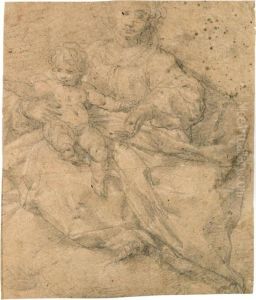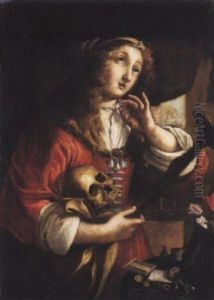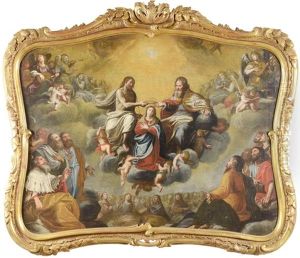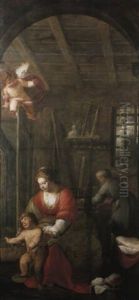Giangiacomo Barbelli Paintings
Giangiacomo Barbelli was an Italian painter of the Baroque period, active mainly in Cremona and the surrounding areas. Born in 1604 in Cremona, Lombardy, Barbelli developed his artistic skills in a period that was rich in stylistic developments and characterized by the dramatic use of light and shadow, as well as a more emotional and dynamic approach to composition, typical of the Baroque era.
Not much is known about his early life and training, but it is believed that he was influenced by the works of local painters and may have been a pupil of the Cremonese school, which had roots in the traditions established by artists such as the Campi brothers. Barbelli's work was also likely influenced by the Venetian school, as the Republic of Venice had a significant cultural impact on the Lombardy region during that time.
Barbelli's artistic career was primarily dedicated to religious commissions, and he produced numerous frescoes and altarpieces for churches in Cremona and its vicinity. His paintings are characterized by their vibrant color palette and a skillful rendering of figures that often appear to be imbued with a sense of movement and emotional intensity. One of his most notable works is the fresco decoration of the cupola and the vault of the church of Sant'Abbondio in Cremona. The frescoes depict scenes from the Old and New Testaments, showcasing Barbelli's ability to convey complex narratives through his art.
Despite his contributions to the Baroque movement in Northern Italy, Giangiacomo Barbelli did not gain the same level of fame as some of his contemporaries. Nonetheless, his work remains an important part of the artistic heritage of the Lombardy region. Barbelli's life was cut short when he died in 1656, but his art continues to be studied and appreciated for its embodiment of Baroque principles and its regional significance.



